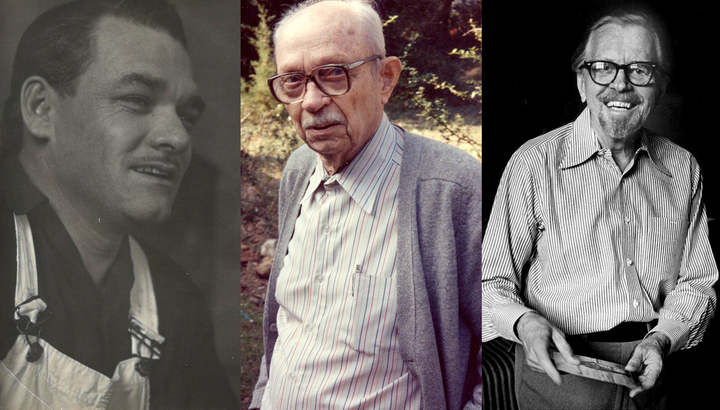The Carter Blog
Carter ARTicles
Vernacular images: Remembering the way we were
Jul 06, 2022
For Mother’s Day this year, my mother shared a beautiful photograph of my grandmother, Daisy Mae Harper Lucas, as a special gift to my sister and me. One of our cousins made the discovery while searching through my late great-uncle’s photo collection and passed it on to my mom. This simple exchange is perhaps how many people encounter vernacular images—sifting through photographs in their own personal collections.
The image of my grandmother shows her as a young woman, perhaps between the ages of 16 to 18. Her hands are held elegantly underneath her chin, and she has the same cheerful grin I have always remembered. We are avid researchers of our family history, so this unique image means a lot to us and provides another lens into my grandmother’s world years before she became a wife and mother of six children. Comparing this image with other images of her, you can see the hope and light of her youth reflected in her eyes as she gracefully poses for the camera. Although we do not know who took this photograph, the comfort and ease in her expression suggest that the image might have been taken by a person she knew. Discovering images like this has given my family more insight into the lives of our ancestors, as well as how the image was potentially created.
Vernacular images tend to be taken by unnamed and/or sometimes non-professional photographers, and they often represent the photographic contributions of everyday people. In today’s terms, these images capture significant points in time. We often find these pictures in print, stored in boxes or photo albums, published in photo books, or shared online through websites and social media. Vernacular photographs document and tell a story of our lives through a lens that we have the power to create.
Of course, vernacular photos are not just images of the distant past but a reflection of our living history, too. They depict trends in photography over the course of time, such as the emergence of consumer color photography, Polaroid cameras, and glossy color prints. I witnessed firsthand the transition from film photography to digital photography. When I was in college, I worked at an Eckerd store (sold to CVS and Rite Aid in the early 2000s) in the photo department printing consumer photographs, and later I worked at JCPenney’s as a photographer in the portrait studio. In addition to being an artist who uses photographic images in my work, I have often been the unnamed photographer capturing family moments, gatherings, and events. And in other times, I was a paid wedding or portrait photographer. So, I have contributed intimately and professionally to the culture of vernacular photos and have a deep sense of their value.
In art museums, vernacular images represent the collective stories of everyday people, individuals who may not be traditionally reflected in a museum’s collection. This was the case with the approximately 250 vernacular images depicting Black life acquired by the Carter from the Peter J. Cohen Collection, which are strategically highlighted in the exhibition Black Every Day: Photographs from the Carter Collection, which I co-curated with Kristen Gaylord, Associate Curator of Photographs. Collector Peter J. Cohen built his collection of over 60,000 photographs over more than two decades through estate sales, eBay, and other dealers. Cohen’s collaborations with museums illustrate an emphasis on collective narratives across categories of images rather than singular histories on individuals within each image.
In this way, vernacular images function very differently in museums than they do in libraries, archives, and historical societies, where captioned information preserving the names and life stories of people is essential for establishing historical value and relevance. In contrast, museums use larger meta categories as a way of establishing new narratives within museums. In the case of Black Every Day, there were far more images depicting the Black experience in the Carter’s collection created by non-Black photographers than Black photographers. So, the vernacular images add more meaning and provide a lens that would not be present otherwise. We believe that many of the personal moments captured in the vernacular works were most likely taken by other Black people: family members, friends, and community members.
Vernacular photographs remind us that our experiences are not created in a vacuum and that there are lives all around us influencing the people we become. Sometimes we are in the driver’s seat documenting the people, places, and things that make our lives worth living. Other times, others are capturing us, showing that we are people that others want to remember. When we allow ourselves to be photographed with this in mind, we can express our desire to be seen and the power to influence what and how people see us.
In a world chock-full of images, our thoughtful documentation matters. People should know that you were here, and your experiences are a living history in the making. Looking at family photos—my own vernacular photos—has taught me the true value of that. Vernacular photos help us to recall and to value what happened not only to our ancestors but to us. We can be both present in everyday life and capture our most revered moments to be cherished, learned from, and remembered for years to come.





